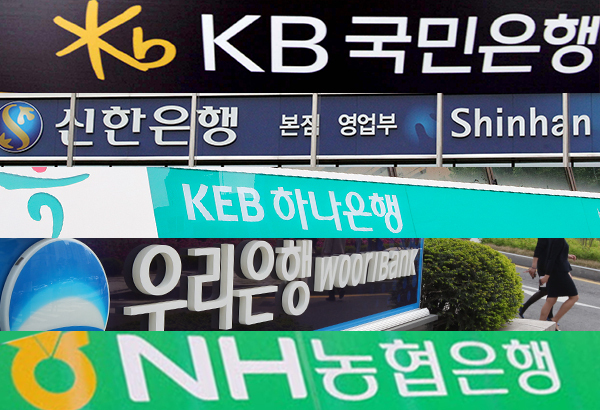 |
South Korea‘s five major banks (Yonhap) |
South Korean banks saw their financial health improve in the third quarter from three months earlier as they reported higher net profits and raised capital amid the coronavirus pandemic, data showed Tuesday.
The average capital adequacy ratio of 19 commercial and state-run banks stood at 16.02 percent as of end-September, up 1.46 percentage points from the end of June, according to the data from the Financial Supervisory Service (FSS).
A key barometer of financial soundness, the ratio measures the proportion of a bank's capital to its risk-weighted assets.
The rise came as their risky loans expanded at a slower pace than their total capital, which includes net profits.
The FSS said most lenders had higher capital adequacy ratios than the international standard, despite a steady rise in lending stemming from the coronavirus outbreak.
The Switzerland-based Bank for International Settlements (BIS), an international organization of central banks, advises lenders to maintain a ratio of 8 percent or higher.
At the end of September, KB Koomin, Hana, Shinhan and other major lenders boasted stable capital adequacy ratios of 15-18 percent.
The figure for two state banks -- the Korea Development Bank and the Export-Import Bank of Korea -- came to 13.36 percent and 14.33 percent, respectively, because of their higher exposure to coronavirus-hit borrowers.
The ratio for Kakao Bank, one of the country's two internet-only lenders, stood at 13.45 percent, down 0.07 point from three months earlier. (Yonhap)








